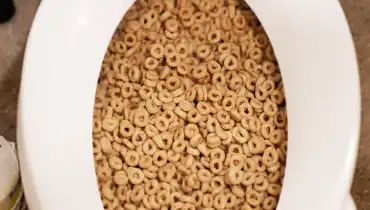Is it Possible to Dispose of Food in the Toilet?
Is it Possible to Dispose of Food in the Toilet?
Blog Article
Nearly everybody is bound to have their unique way of thinking in relation to Think Twice Before Flushing Food Down Your Toilet.

Intro
Many people are usually confronted with the dilemma of what to do with food waste, especially when it involves leftovers or scraps. One typical concern that occurs is whether it's fine to flush food down the commode. In this write-up, we'll explore the reasons why individuals may consider flushing food, the effects of doing so, and different methods for appropriate disposal.
Reasons that people could consider flushing food
Lack of recognition
Some people might not know the prospective damage brought on by flushing food down the bathroom. They might mistakenly believe that it's a harmless method.
Ease
Purging food down the bathroom might feel like a fast and simple option to getting rid of undesirable scraps, especially when there's no neighboring garbage can offered.
Idleness
Sometimes, individuals may merely select to flush food out of large laziness, without thinking about the effects of their actions.
Repercussions of flushing food down the toilet
Ecological influence
Food waste that ends up in waterways can contribute to air pollution and harm water communities. Furthermore, the water made use of to purge food can stress water sources.
Pipes concerns
Flushing food can cause clogged up pipes and drains, triggering costly plumbing repairs and aggravations.
Sorts of food that need to not be flushed
Coarse foods
Foods with fibrous structures such as celery or corn husks can get entangled in pipelines and cause obstructions.
Starchy foods
Starchy foods like pasta and rice can soak up water and swell, causing obstructions in pipelines.
Oils and fats
Greasy foods like bacon or food preparation oils need to never ever be flushed down the bathroom as they can strengthen and cause clogs.
Proper disposal methods for food waste
Using a garbage disposal
For homes equipped with garbage disposals, food scraps can be ground up and purged via the pipes system. However, not all foods are suitable for disposal in this manner.
Recycling
Certain food packaging products can be reused, lowering waste and minimizing environmental effect.
Composting
Composting is an eco-friendly means to dispose of food waste. Organic materials can be composted and made use of to improve soil for horticulture.
The importance of proper waste monitoring
Lowering environmental harm
Appropriate waste management methods, such as composting and recycling, assistance minimize contamination and maintain natural deposits for future generations.
Protecting plumbing systems
By preventing the practice of flushing food down the toilet, home owners can prevent expensive plumbing fixings and keep the integrity of their pipes systems.
Verdict
In conclusion, while it may be tempting to purge food down the commode for convenience, it is essential to comprehend the potential consequences of this action. By taking on correct waste monitoring practices and taking care of food waste sensibly, people can add to much healthier plumbing systems and a cleaner setting for all.
FLUSH FOOD DOWN THE TOILET?
FLUSHING FOOD CAN CAUSE BLOCKED DRAINS IN YOUR HOME
All of the plumbing fixtures in your home are connected to the same sewer pipe outside of your home. This outdoor sewer pipe is responsible for transporting all the wastewater from your home to the Council sewer mains. Even small pieces of food that go down the kitchen sink can cause problems for your sewer. It should therefore be obvious that flushing larger bits of food, such as meat, risks a clog in either the toilet itself or the sewer pipes. Flushing greasy food is even more problematic because oil coagulates when it cools, coating the interior lining of your pipes.
THE TOILET IS NOT A BIN
Food isn’t the only thing that people shouldn’t be flushing down the toilet. People use the toilet to dispose of all kinds of things such as tampons, makeup wipes, dental floss, kitty litter and even underwear. Water goes to great lengths to educate residents about the high costs and stress placed on wastewater treatment systems simply from people flushing the wrong stuff down the toilet. It costs taxpayers millions of dollars each year, and homeowners thousands in blocked drain repairs.
FLUSHING FOOD IS A WASTE OF WATER
Flushing food is a waste of our most precious resource - water. In June this year Level 1 water restrictions were introduced to protect water supply from drought conditions. Much of New South Wales continues to be affected by prolonged drought with recent figures revealing up to 97 per cent of the state remains in drought. Depending on whether you have a single or dual flush toilet, every single flush uses between five and 11 litres of water. In the current climate this is a huge amount of water to be wasting on flushing food that should be placed in the bin (or better yet, the compost).
https://www.jabplumbingsolutions.com.au/blog/can-you-flush-food-down-the-toilet

Do you like more info about Flushing Food Down the Toilet?? Try leaving a short review below. We will be delighted to know your ideas about this content. Hoping to see you back again later on. Enjoyed our review? Please share it. Let others discover it. Thanks a lot for your time invested reading it.
Schedule Service Pickup Report this page